Can Hummingbirds Even Fly Backwards?
Updated: Jan. 26, 2024
Hummingbirds are acrobatic birds that can hover and even fly backwards. Learn the science behind the magic.
Hummingbirds Are Aerial Acrobats
If you’ve ever been lucky enough to have hummingbirds visit your backyard, you’ve probably marveled at the way these tiny birds fly. They don’t just zoom through the air at high speeds. They can also hover and move sideways in mid-air to sip sugar-water from feeders. You may be wondering: can hummingbirds fly backwards and upside-down, too? Yes! Here’s why they’re the most talented aerial acrobats of the bird world.
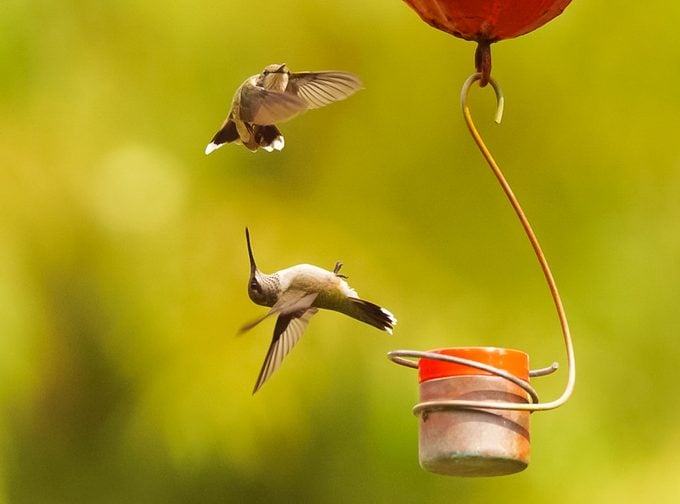
Discover more jaw-dropping hummingbird facts.
How Hummingbird Wings Work
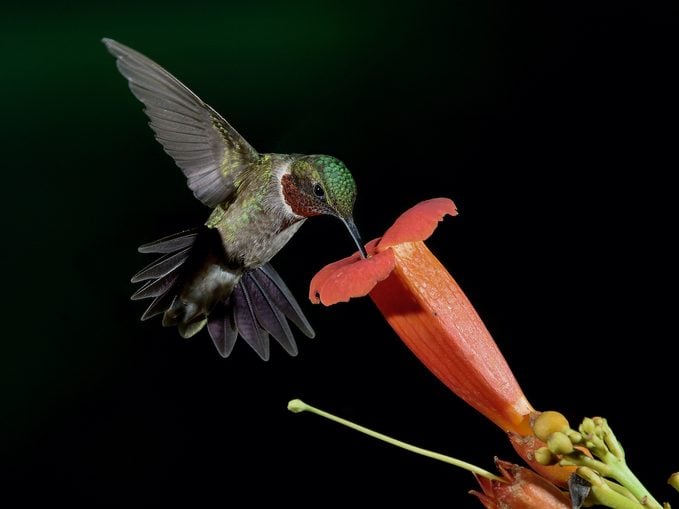
Although the majority of bird species have wings that are up for the task of flight, the anatomy of hummingbird wings are special. These birds constantly zip from flower to flower and have to flap their wings more than 50 times per second to stay in the air. Unlike other bird species, hummingbirds can’t use their wings to glide or soar.
So, how can hummingbirds fly backwards? The secret is in the structure of their wings and the way they get their lifting power. Non-hummingbirds flap their wings up and down and gain lift on the downstroke. Basically, when their wings move down, the bird flies up.
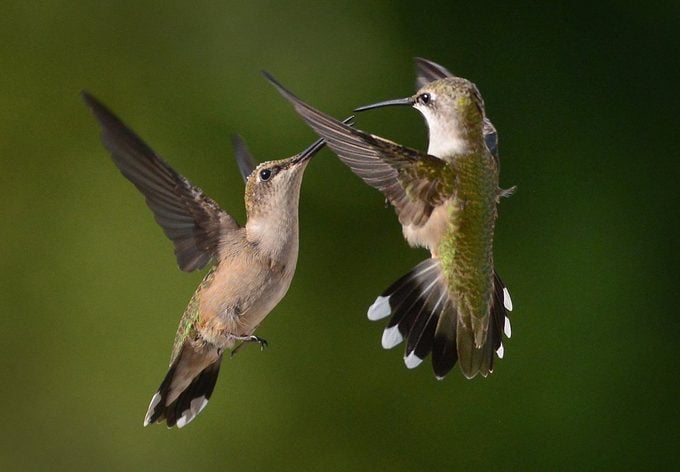
Hummingbirds are different, though. They gain lifting power in two directions: backwards and forwards. Instead of the typical up-and-down movement, hummingbird wings move in a figure-eight shape. Hummingbirds can do this, because they maneuver their long upper arm bones and twist their wrists to invert their wings.
Learn how to attract hummingbirds with 10 expert tips.
Hummingbird Anatomy
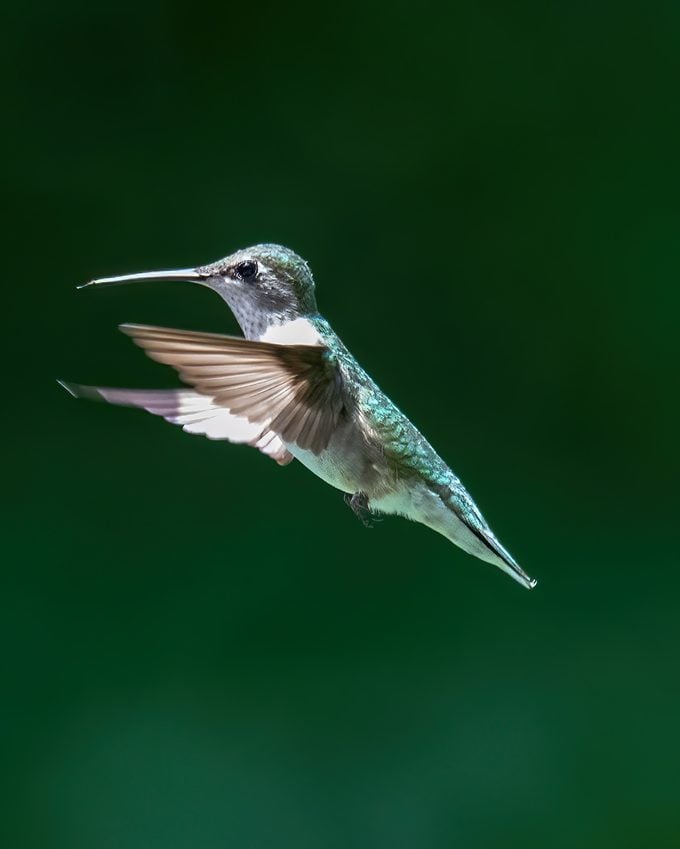
Not only can hummingbirds move and rotate their wings in ways that other birds can’t, they also have the muscles to make it happen. A hummingbird’s pectoral muscles make up about 30% of their body weight. And their feet aren’t very well-developed, so they can’t use them to walk or even hop effectively. Although this may seem odd, it makes their flying more energy efficient. They don’t have unnecessary weight pulling them down and making them work harder.
Learn more about why hummingbird anatomy is so amazing.
Why Do Hummingbirds Fly Backwards?
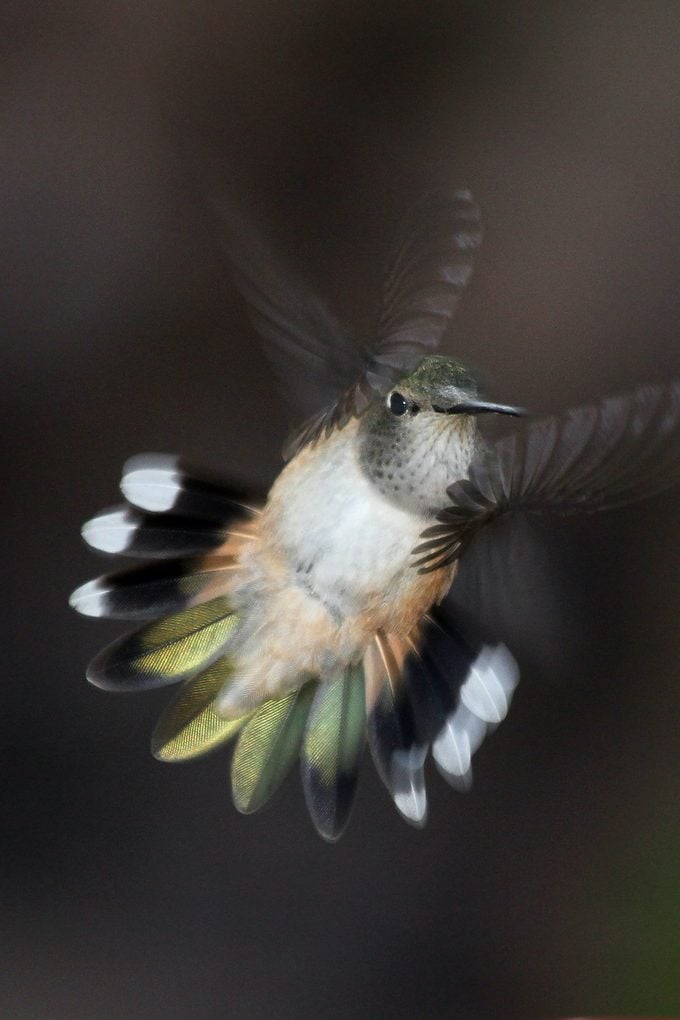
As mentioned above, hummingbirds can’t really use their feet to get around, so they truly live life on the wing. Although hummingbirds hunt small insects and spiders, their diet mostly consists of nectar and sugar-water. It takes a lot of energy to hover in the air! The ability to fly backwards allows a hummingbird to zip up to a flower, suck up the nectar using its long tongue and then gracefully move back from the bloom to fly to the next one.
Did you know: the hummingbird heart rate is unbelievably fast.
Can Other Birds or Pollinators Fly Backwards?
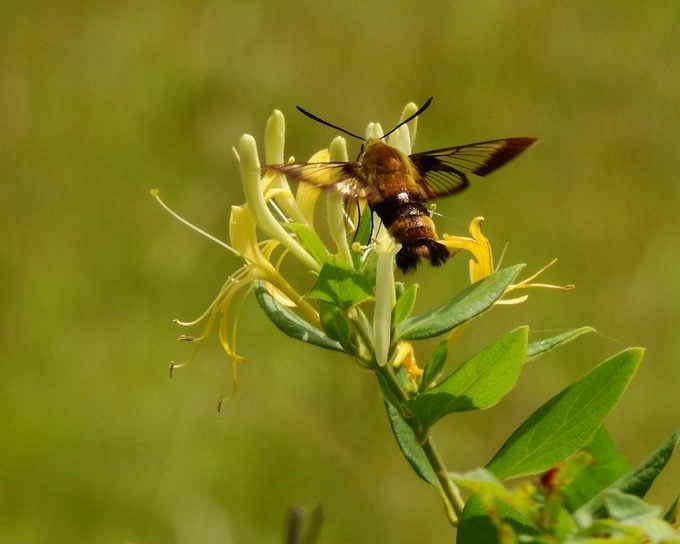
One of the many reasons hummingbirds are so special is because they’re the only birds that can fly backwards. However, flying backwards is a skill that they share with hummingbird moths. These insects are sometimes confused for hummingbirds, because they have a lot in common at first glance. Both hummingbirds and hummingbird moths love nectar and zip from flower to flower.
They are excellent at hovering and other flying feats. And hummingbird moths can have colorful bodies, similar to hummingbirds. Instead of looking at flight patterns, check their size. Hummingbirds are bigger and longer than hummingbird moths: a difference of about two inches. Of course, if you get close enough, you’ll quickly be able to tell which has six legs and antennae and which only has two legs and shimmery feathers!




















